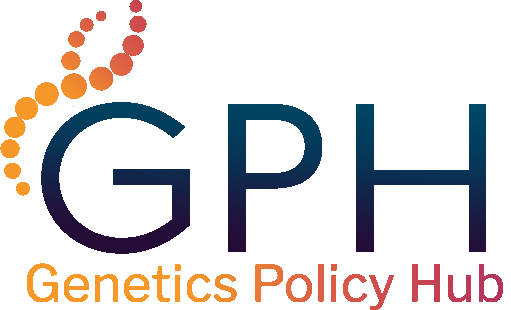From 2004 to 2024, the Health Resources and Services Administration (HRSA) funded the National Coordinating Center for the Regional Genetics Networks (NCC). NCC developed and maintained the Genetics Policy Hub.
With the conclusion of NCC funding, the Genetics Policy Hub (GPH) will no longer be updated or maintained. Information on GPH should be used for historical reference only.
Medical Necessity Webinar Series
In the spring of 2022, The Catalyst Center and the National Coordinating Center for the Regional Genetics Networks (NCC), the organization that develops the Genetics Policy Hub, held a three-part webinar series to help healthcare providers navigate medical necessity.
- Part 1- Define and discuss the use of evidence to form medical necessity criteria and policy;
- Part 2- Medicaid and Early and Periodic Screening, Diagnosis, and Treatment (EPSDT)- The Title V and Medicaid Relationship
- Part 3- Practical Application of Medical Necessity: Understanding Prior Authorization Process, Requesting Authorizations, and Denials and Appeals.
Speakers in this series included:
- Erin Beaver, MS, CGC Licensed Certified Genetic Counselor, Missouri Baptist Medical Center
- Julie Kaylor, MS, CGC Director, Medical Affairs, Managed Care Guardant Health
- Nicole Guysi, Family Leader
- Demeatrice Nance, CCHW Research Coordinator, Pediatric Institute, Cleveland Clinic Children’s
- Tammy Jones Program Coordinator, Genetic Metabolic Nutrition Research & MNT4P Program, Emory University
- Jeff Schiff, MD, MBA Senior Scholar, AcademyHealth
Define and Discuss the Use of Evidence to Form Medical Necessity Criteria and Policy
- Define what is medical necessity.
- Describe how evidence is evaluated to determine whether a test or service is deemed medically necessary.
- Explain how the evaluation of benefits and costs to families and to payers are considered when determining medical necessity policy.
Medicaid and Early and Periodic Screening, Diagnosis, and Treatment (EPSDT)- The Title V and Medicaid Relationship
Learning objectives for this session include:
- Explain how EPSDT sets a standard for care for children and youth and its relationship to medical necessity
- Compare the relationship of Title V and Medicaid for supporting coverage and access to services in states.
- Define the first steps in the process of getting prior authorization for medically necessary services
Practical Application of Medical Necessity: Understanding Prior Authorization Process, Requesting Authorizations, and Denials and Appeals
Learning objectives for this session include:
- Explain what it means when a prior authorization is denied
- Identify where to begin the appeal process.
- List the steps in the process for an appeal.
- Describe options if an appeal is denied.
Additional Resources
Looking for additional resources to help you navigate medical necessity? Explore some select resources from partner organizations.
The Catalyst Center Resources
State Medicaid programs are required to provide Medicaid enrollees under age 21 with comprehensive and preventive health care services through the Early Screening and Periodic Screening, Diagnostic and Treatment (EPSDT) benefit. Federal law requires states to cover “medically necessary services” under the EPSDT benefit “whether or not such services are covered under the State plan.” The federal statute does not define “medical necessity” but instead describes a broad standard for coverage. States can, therefore, establish their own parameters for medical necessity decisions so long as those parameters are not more restrictive than the federal statute. In March 2021, with support from the Catalyst Center, The National Academy for State Health Policy (NASHP) conducted a 50-state scan of medical necessity definitions used by state Medicaid programs for their EPSDT benefit, updating a previous scan conducted in 2013. This resource presents definitions of medical necessity from all 50 states and the District of Columbia.
Heartland Regional Genetics Network (HRGN) Resources
Julie Taylor and Erin Beaver partnered with HRGN to develop a genetic testing toolkit. The toolkit includes:
- Patient glossary for terms related to insurance coverage
- Sponsored Testing List
- Prior Authorization Information
- How to do a Prior Authorization
- What needs to be in a Letter of Medical Necessity
- Letter of Medical Necessity Templates (General, Whole Exome Sequence, Whole Genome Sequence + Whole Exome Sequence, Chromosomal Microarray)
